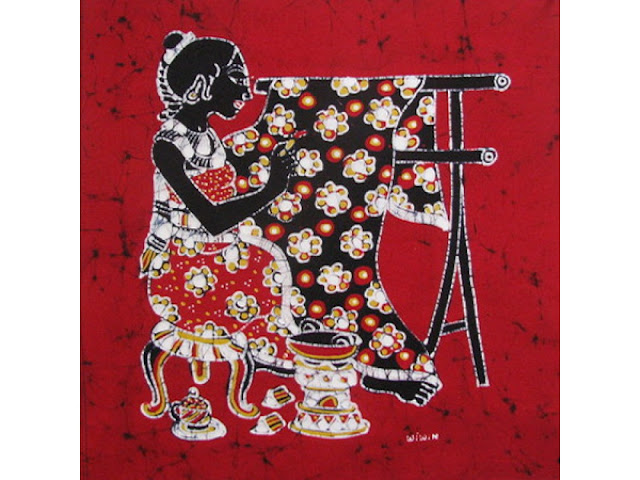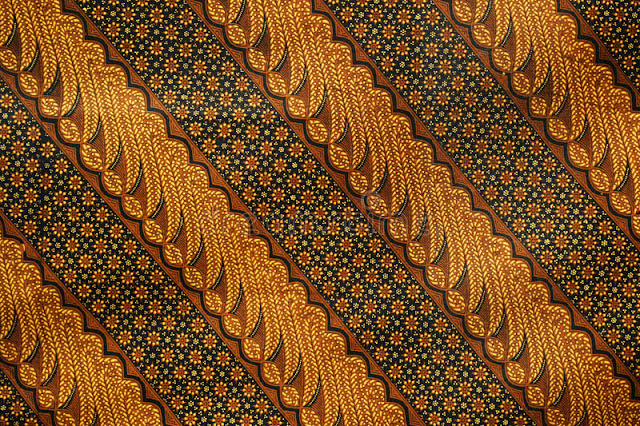Batik is a technique of wax-resist dyeing applied to whole cloth, or cloth made using this technique. Batik is made either by drawing dots and lines of the resist with a spouted tool called a canting. Batik is both an art and a craft, which is becoming more
popular and well known in the West as a wonderfully creative medium.
The art of decorating cloth in this way, using wax and dye,
has been practised for centuries. In Java, Indonesia, batik
is part of an ancient tradition, and some of the finest batik
cloth in the world is still made there. The word batik originates
from the Javanese tik and means to dot. Batik is one of those art making processes that requires a lot of preparation and supervision on your part but is totally worth the sacrifice. To make a batik, selected areas of the cloth are blocked out
by brushing or drawing hot wax over them, and the cloth is then dyed.
The parts covered in wax resist the dye and remain the
original colour. This process of waxing and dyeing can be repeated
to create more elaborate and colourful designs. After the
final dyeing the wax is removed and the cloth is ready for wearing or
showing.






